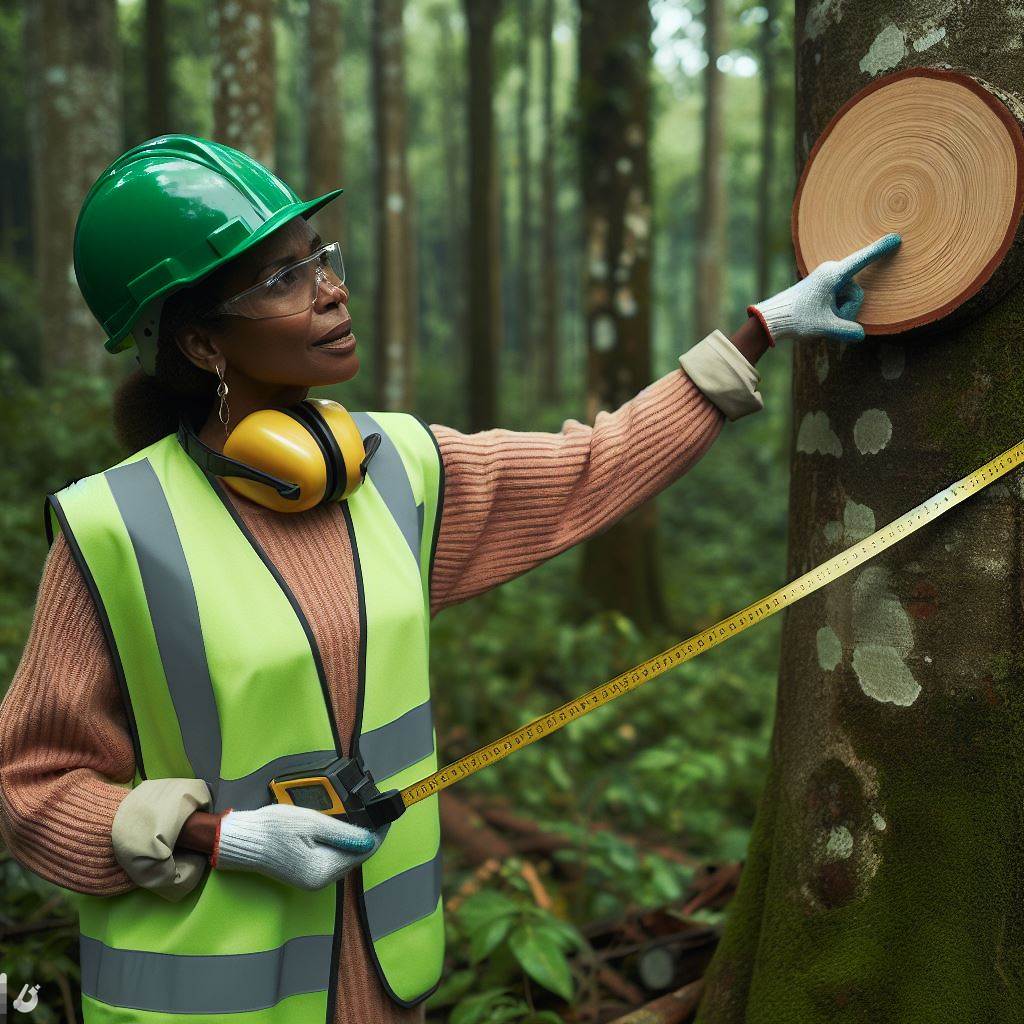Introduction
A. Canadian Environmental Engineers Tackling Pollution
Canada’s environmental engineers stand at the forefront, combating pollution and shaping a sustainable future. Their innovative strategies redefine environmental protection.
B. Importance of Addressing Pollution
Pollution poses a dire threat to ecosystems, biodiversity, and human health.
Understanding its urgency is pivotal for fostering a healthy, resilient environment.
C. Role of Environmental Engineers in Sustainable Solutions
- Innovative Technologies: Environmental engineers pioneer cutting-edge technologies to curb pollution, promoting cleaner industries and practices.
- Regulatory Compliance: They work on creating and enforcing regulations, ensuring industries adhere to eco-friendly standards, mitigating their environmental footprint.
- Ecosystem Restoration: Environmental engineers actively engage in restoring damaged ecosystems, revitalizing natural habitats, and preserving biodiversity.
In this blog section, we’ll delve into the impactful work of Canadian environmental engineers, exploring their methods, challenges, and triumphs in the relentless fight against pollution.
Overview of Canadian Environmental Engineers
A. Environmental Engineering: A Crucial Role in Pollution Mitigation
Environmental engineering plays a pivotal role in tackling pollution head-on.
These engineers are on the frontline, employing innovative solutions to safeguard Canada’s natural resources and combat environmental degradation.
B. Education and Skills: The Foundation of Environmental Engineering
To become an environmental engineer, one must embark on a journey of rigorous education and skill development.
Typically holding a bachelor’s degree in environmental engineering or a related field, these professionals undergo extensive training in chemistry, biology, and physics.
Skills Required:
- Analytical Skills: Environmental engineers must analyze complex data to formulate effective solutions.
- Problem-Solving Skills: Addressing environmental challenges demands creative and strategic problem-solving.
- Technical Proficiency: Mastery of cutting-edge technologies for monitoring and mitigating environmental issues.
- Communication Skills: Effectively conveying technical information to diverse stakeholders is crucial.
- Regulatory Knowledge: Staying abreast of environmental regulations to ensure compliance and sustainable practices.
C. Scope of Work: A Multifaceted Involvement
Environmental engineers in Canada engage in diverse industries, actively contributing to sustainable practices and pollution reduction.
- Energy Sector: Designing and implementing eco-friendly energy production methods.
- Waste Management: Developing efficient waste disposal and recycling systems.
- Construction Industry: Ensuring projects adhere to environmental regulations and sustainable building practices.
Their involvement extends beyond these sectors, reflecting the versatility of their expertise.
As stewards of the environment, Canadian environmental engineers play a pivotal role in shaping a greener and more sustainable future.
Read: Conservation Scientist Salary in Canada
Current Pollution Challenges in Canada
Canada, known for its pristine natural beauty, is facing numerous pollution challenges that pose a threat to its environment, wildlife, and human health.
In this section, we will discuss some of the major pollution challenges faced by Canada and highlight their impact.
A. Pollution Challenges
- Air Pollution: Canada’s urban centers, such as Toronto and Vancouver, struggle with high levels of air pollution due to industrial activities and traffic emissions.
- Water Pollution: Pollutants from industrial waste, agricultural runoffs, and sewage are contaminating Canada’s lakes, rivers, and oceans.
- Soil Pollution: The use of pesticides and chemicals in agriculture has led to soil contamination, affecting the quality of agricultural land and food production.
B. The impact of pollution on human health, wildlife, and the environment
1. Impact on Human Health
- Respiratory Issues: Air pollution in urban areas has resulted in an increase in respiratory diseases such as asthma and bronchitis among residents.
- Waterborne Diseases: The pollution of water sources has led to an upsurge in waterborne diseases like cholera and giardiasis, causing significant health risks to the population.
- Toxic Exposure: Chemical pollutants in the soil can enter the food chain, exposing humans to toxic substances that may lead to various health problems, including cancer.
2. Impact on Wildlife
- Habitat Destruction: Pollution impacts the natural habitats of wildlife, leading to the destruction of ecosystems and the displacement or extinction of many species.
- Bioaccumulation: Contaminated water sources result in bioaccumulation of toxins in aquatic species, affecting their reproductive abilities and overall population.
- Biodiversity Loss: Pollution disrupts the delicate balance of ecosystems, leading to a loss of biodiversity and a decline in species diversity across Canada.
3. Environmental Impact
- Climate Change: Pollution, particularly greenhouse gas emissions, contributes to global climate change, causing shifts in temperature, weather patterns, and rising sea levels.
- Acid Rain: Pollutants from industries and transportation contribute to acid rain, which damages forests, lakes, and streams, causing long-term ecological harm.
- Eutrophication: Excessive levels of nutrients, such as nitrogen and phosphorus, in water bodies due to pollution can lead to eutrophication, causing harmful algal blooms and disrupting ecosystems.
C. Severity of the Pollution Problem
- Air Pollution Statistics: According to Environment and Climate Change Canada, air pollution contributes to thousands of premature deaths and illnesses each year.
- Water Pollution Examples: The contamination of Lake Erie with harmful algal blooms has affected drinking water sources for millions of people in Ontario.
- Soil Pollution Facts: Agriculture Canada reports that soil degradation due to pollution leads to a loss of $3.1 billion annually in crop productivity.
Therefore, Canada faces significant pollution challenges that have adverse effects on human health, wildlife, and the environment.
It is crucial for environmental engineers and policymakers to work together to develop effective strategies and regulations to combat pollution and ensure a sustainable future for the country.
Read: Emerging Trends in Conservation Science
Role of Environmental Engineers in Tackling Pollution
A. How environmental engineers play a crucial role in addressing pollution
Environmental engineers are an integral part of the battle against pollution.
Their expertise and knowledge are crucial in addressing and mitigating environmental issues.
Through various methods and technologies, these professionals play a significant role in creating sustainable solutions.
Environmental engineers tackle pollution by identifying its sources and developing strategies to combat it.
They analyze data, conduct extensive research, and assess the impact of pollution on the environment and human health.
These engineers work towards preventing pollution by designing and implementing effective systems and regulations.
They collaborate with governments, organizations, and communities to develop policies, standards, and guidelines aimed at reducing pollution.
Unlock Your Career Potential
Visualize a clear path to success with our tailored Career Consulting service. Personalized insights in just 1-3 days.
Get StartedB. Methods and technologies they use to mitigate pollution
Environmental engineers utilize a range of methods and technologies to mitigate pollution.
They develop and implement wastewater treatment systems to remove contaminants from water bodies.
These systems employ physical, chemical, and biological processes to purify and conserve water resources.
Air pollution is another major concern, and environmental engineers are at the forefront of finding innovative solutions.
They design and operate air pollution control systems that reduce emissions from industries, power plants, and vehicles.
These engineers also promote cleaner energy sources such as wind and solar power to minimize air pollution.
Environmental engineers aim to create sustainable solutions that not only reduce pollution but also promote long-term environmental health.
They conduct life cycle assessments of products and processes to identify areas where environmental improvements can be made.
These professionals promote sustainable development by incorporating eco-friendly designs and practices.
They incorporate concepts such as green infrastructure, waste reduction, and resource recovery in their projects.
Through sustainable engineering principles, environmental engineers strive to minimize pollution while maintaining economic viability.
C. Their involvement in designing and implementing sustainable solutions
Environmental engineers work closely with various stakeholders to address pollution.
They collaborate with scientists, policymakers, industry professionals, and community leaders to develop effective strategies and technologies.
These partnerships facilitate the exchange of ideas, knowledge, and resources to tackle pollution collectively.
Moreover, environmental engineers engage with local communities to raise awareness about the importance of pollution control.
They educate the public on sustainable practices and encourage individual efforts to minimize pollution.
By involving communities in the decision-making process, environmental engineers ensure that their initiatives align with societal values and needs.
Constant research and innovation are key aspects of environmental engineering.
Engineers continually explore new technologies, materials, and approaches to tackle pollution effectively.
They conduct experiments, simulations, and assessments to evaluate the performance of pollution control systems and identify areas for improvement.
Research in environmental engineering also focuses on emerging pollutants and their impact on ecosystems and human health.
Engineers contribute to the development of advanced monitoring systems and sensors to detect and measure pollutants accurately.
This research plays a vital role in enhancing pollution prevention and control measures.
In general, environmental engineers play a crucial role in addressing and mitigating pollution.
Through their expertise, they develop innovative methods and technologies to tackle pollution effectively.
Their involvement in designing sustainable solutions ensures a better future for both the environment and human well-being.
Collaborations, research, and public awareness are key components of their approach to create a cleaner and healthier planet.
Read: Conservation Science: Skills You Need

Examples of Canadian Environmental Engineers Tackling Pollution
In the realm of environmental stewardship, Canadian environmental engineers stand tall, demonstrating an unwavering commitment to combat pollution.
Let’s delve into five remarkable examples showcasing their active engagement in fostering a cleaner and greener world.
A. Pioneering Innovations
1. Smog-Eating Concrete
- Engineers in Toronto pioneered concrete that absorbs pollutants, actively reducing urban smog.
- This groundbreaking material exemplifies their dedication to transforming infrastructure for environmental gains.
2. Wastewater Treatment Advancements
- Across Canada, environmental engineers have spearheaded advanced wastewater treatment technologies.
- Their innovations ensure cleaner discharges into water bodies, safeguarding aquatic ecosystems.
B. Notable Projects
1. Zero-Emission Transportation Networks
- Collaborating with city planners, engineers have developed sustainable transportation solutions, minimizing vehicular pollution.
- Bike lanes, electric vehicle charging stations, and efficient public transit systems are among their impactful projects.
2. Green Building Initiatives
- Environmental engineers have led initiatives promoting energy-efficient and eco-friendly building designs.
- Incorporating renewable energy sources and sustainable materials, these projects redefine architectural norms.
C. Success Stories
1. Rivers Rejuvenated
- Engineers in British Columbia undertook a river restoration project, revitalizing ecosystems harmed by industrial pollutants.
- Fish populations rebounded, demonstrating the tangible positive impact of their strategic interventions.
2. Air Quality Improvements
- In Montreal, a team of engineers tackled air pollution by implementing stricter industrial emission controls.
- The result? Improved air quality indices and a healthier living environment for residents.
In the realm of environmental engineering, these examples underline the transformative power wielded by Canadian professionals.
Their successes echo beyond borders, inspiring global efforts to combat pollution and build a sustainable future.
Through innovation, dedication, and a profound sense of responsibility, Canadian environmental engineers continue to leave an indelible mark on the fight against pollution.
Read: Day in the Life of a Conservation Scientist
Collaboration and Partnerships
The field of environmental engineering requires collaboration between various stakeholders, such as environmental engineers, government agencies, and other key players, to tackle pollution effectively.
This section highlights the importance of collaboration and partnerships in addressing environmental challenges and implementing pollution reduction projects.
A. Importance of Collaboration
Collaboration between environmental engineers, government agencies, and other stakeholders is crucial for several reasons:
- Sharing of Expertise: Environmental engineers possess technical knowledge, while government agencies understand regulations and policies.
Through collaboration, they can combine their expertise to devise effective pollution reduction strategies. - Access to Resources: Government agencies often have access to funding and resources necessary for pollution control. Collaboration allows environmental engineers to leverage these resources for their projects.
- Enhanced Decision-making: By bringing together experts from different fields, collaboration facilitates more informed decision-making.
Various perspectives help in developing comprehensive and innovative solutions to address pollution challenges. - Increased Accountability: Collaboration between stakeholders ensures accountability for implementing pollution reduction measures. Each participant has a role to play and can be held responsible for their contribution.
- Effective Implementation: Collaborative efforts ensure a coordinated approach towards pollution reduction.
By working together, stakeholders can streamline their actions, making the implementation process more efficient and successful.
B. Interdisciplinary Collaboration for Effective Pollution Control
Pollution is a complex issue that requires an interdisciplinary approach for effective control.
Collaboration among environmental engineers, scientists, policymakers, and social scientists is necessary to understand the root causes of pollution and develop holistic solutions.
Here’s why interdisciplinary collaboration is crucial:
- Comprehensive Problem-solving: Pollution is influenced by various factors, including industrial practices, urban planning, human behavior, and climate change.
Interdisciplinary collaboration allows for a comprehensive understanding of these factors and facilitates the development of effective solutions. - Data Integration: Different disciplines contribute to diverse datasets. By collaborating, environmental engineers can leverage these datasets to gather a comprehensive and accurate picture of pollution sources and impacts.
- Innovative Solutions: Cross-disciplinary collaboration fosters creativity and innovation. Environmental engineers, when working with experts from other fields, can explore new technologies, policies, and practices that can lead to breakthrough solutions for pollution control.
- Addressing Social and Behavioral Aspects: Pollution is not only an engineering problem but also has social and behavioral dimensions.
Collaboration with social scientists helps in understanding human behavior, perceptions, and attitudes towards pollution, enabling the development of targeted interventions.
C. Role of Partnerships in Financing and Implementation
Partnerships play a crucial role in financing and implementing pollution reduction projects.
They bring together multiple stakeholders, pool resources, and leverage expertise to achieve common goals.
Here are some key aspects of partnerships in pollution reduction:
- Funding: Partnerships enable access to diverse funding sources, including public, private, and philanthropic entities.
This financial support is essential for carrying out pollution control projects, conducting research, and implementing sustainable solutions. - Knowledge Exchange: Partnerships facilitate the exchange of knowledge and best practices among different stakeholders.
Environmental engineers can learn from government agencies, NGOs, and industry partners, enhancing their understanding of pollution control techniques. - Technology Transfer: Partnerships provide a platform for technology transfer, where innovative pollution control technologies developed by environmental engineers can be shared and implemented by industry partners and other stakeholders.
- Collaborative Implementation: Partnerships enable the joint implementation and monitoring of pollution reduction projects.
By combining resources and expertise, stakeholders can execute projects more effectively, ensuring better outcomes. - Engagement and Support: Partnerships encourage public engagement and support, as they involve multiple stakeholders, including local communities.
This collaboration helps in garnering public acceptance and support for pollution control initiatives.
Ultimately, collaboration between environmental engineers, government agencies, and other stakeholders is essential for tackling pollution effectively.
Interdisciplinary collaboration allows for a comprehensive understanding of pollution issues, while partnerships provide the necessary resources and expertise for implementing pollution reduction projects.
By working together, these stakeholders can pave the way for a cleaner and healthier environment.
Future Outlook and Challenges
As Canadian environmental engineers continue to tackle pollution, they are likely to face several potential challenges in the future.
These challenges are important to address in order to ensure the effectiveness of their efforts and the sustainability of their solutions.
A. Future challenges that Canadian environmental engineers may face in tackling pollution
- Rapid technological advancements: Environmental engineers will need to keep up with rapidly evolving technologies and incorporate them into their work to effectively address pollution. Staying updated with the latest research and innovation will be crucial.
- Climate change impacts: With the increasing effects of climate change, Canadian environmental engineers will need to adapt their strategies and solutions to changing environmental conditions.
This may involve considering more unpredictable weather patterns and rising sea levels. - Expanding urbanization: As cities continue to grow, environmental engineers will need to find innovative ways to manage pollution in densely populated areas.
Solutions may include implementing green infrastructure and promoting sustainable urban planning.
B. The importance of ongoing research and innovation in finding new solutions
- Emerging contaminants: The discovery of new pollutants and contaminants poses a challenge for environmental engineers.
Ongoing research will be necessary to identify and address these emerging threats to the environment and human health. - Indigenous knowledge inclusion: Recognizing and incorporating Indigenous knowledge and practices into environmental engineering projects will be crucial for addressing pollution effectively.
Collaborating with Indigenous communities can lead to more holistic and sustainable solutions.
C. The need for continuous improvement and adaptation to changing environmental conditions
- Political and regulatory changes: The effectiveness of environmental engineering projects depends on supportive policies and regulations.
Engineers will need to navigate potential changes in government priorities and regulations to ensure the continuity of their efforts. - Public awareness and engagement: Raising awareness among the general public about the importance of pollution control will be crucial.
Environmental engineers should strive to engage with the public, educating them about the impact of pollution and involving them in decision-making processes. - Funding and resources: Adequate funding and resources play a vital role in implementing effective pollution control measures.
Environmental engineers will need to explore diverse funding sources and advocate for sufficient resources to support their work.
Essentially, Canadian environmental engineers face a range of potential challenges in tackling pollution.
Ongoing research, innovation, and adaptation to changing environmental conditions are vital.
Collaboration with Indigenous communities, public engagement, and access to adequate funding and resources are all crucial factors for success.
By addressing these challenges head-on, environmental engineers can continue to find new solutions and make a significant positive impact on the environment.
Conclusion
A. Key Points Summary
In this blog journey, we explored how Canadian environmental engineers are champions in the fight against pollution.
They innovate, implement, and lead change with resilience.
B. Crucial Role of Canadian Environmental Engineers
These professionals play a vital role in shaping sustainable solutions.
Their proactive initiatives range from designing eco-friendly systems to pioneering cutting-edge technologies that reduce environmental impact.
C. Encouragement for Support
Let’s rally behind these unsung heroes.
Support and appreciate Canadian environmental engineers for safeguarding our planet.
Every step counts, and their dedication deserves acknowledgment.
Together, we can build a cleaner, healthier future.




